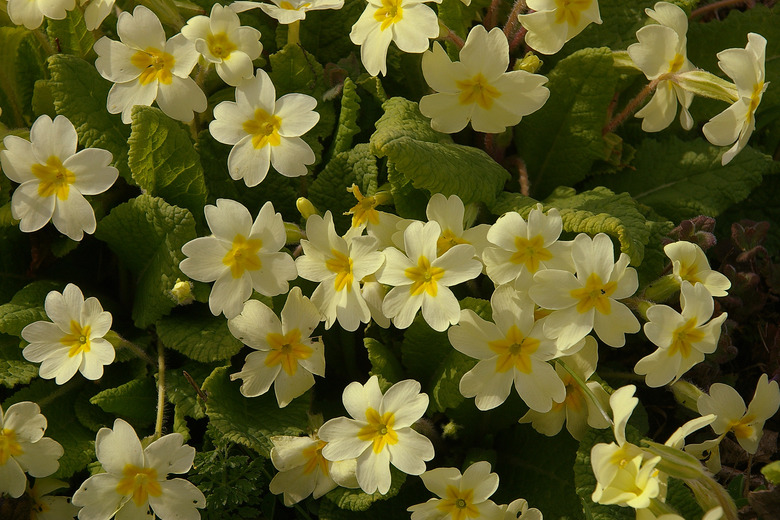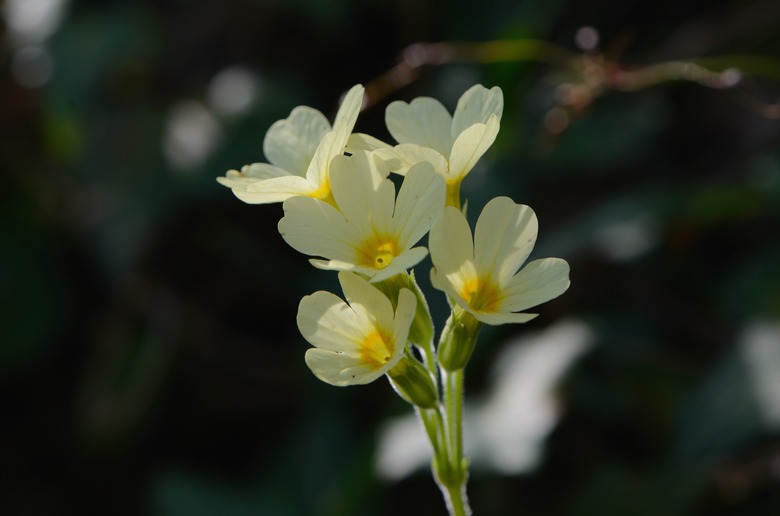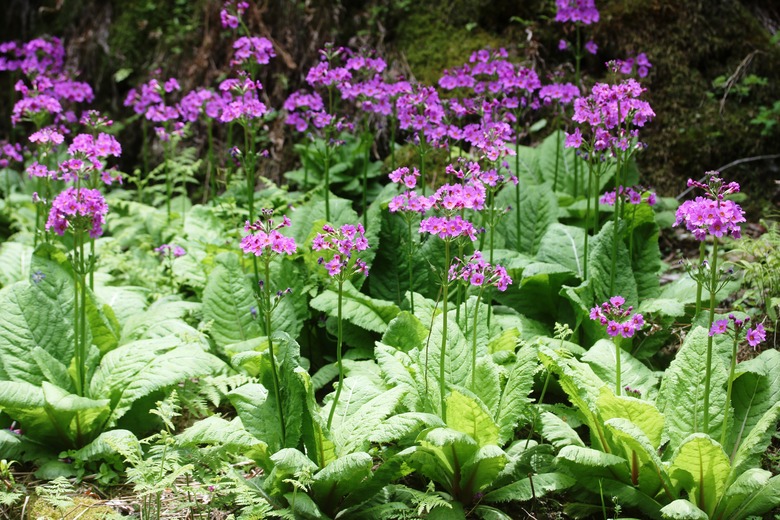Primrose Flower Meaning
If you have traveled the "primrose path," you have experienced a life of leisure. This phrase has long meant an easy, carefree road in which you have time to admire the primroses, typically the first flowers in early spring.
Throughout history, flowers have been imbued with meaning, sometimes with historical or cultural significance and sometimes literary or medicinal. The primrose flower (Primula spp., USDA hardiness zones 4 to 8) certainly takes its place among lore.
Types of Primroses
There are multiple types of primroses in the Primula genus; in fact, there are about 450 species of these showy flowering plants, among which 250 are cultivated and might be found in garden centers. Most bloom in early spring, although some have flowers that last until early summer.
Primroses in the Garden
These early blooming flowers are perennial plants that usually grow in a mounded form up to 3 feet in width. They have green leaves that form a rosette, but their flower color varies widely, depending on the species or cultivar, so they may have blue, dark- or pale-yellow, pink, purple, red or white flowers.
Plant primrose in partial shade or full shade, which equates to less than two hours a day. While these plants like somewhat wet soil, they must have good drainage.
These plants are popular in rock gardens due to their low, mounding habit. While most flower in early spring, some bloom in late spring.
Common Primrose Varieties
The common primrose is Primula vulgaris (zones 4 to 9), with single blossoms on 6-inch stems. A wild primrose, the cowslip (Primula veris, zones 5 to 9) has bright yellow flowers, while the oxlip (Primula elatior, zones 4 to 8 ) has larger yellow blooms.
Among water-loving primroses are the Japanese primrose (Primula japonica, zones 3 to 8) and the drumstick primrose (Primula denticulata, zones 2 to 8).
All are valuable garden plants that do their due diligence during the growing season. Primrose care is minimal, as these plants attract few pests or diseases.
Primrose Symbolism
In the Victorian era, flowers were commonly used to symbolize various emotions, particularly those related to love.
The Primrose in Literature
Consider John Donne's poem "The Primrose," in which Donne contrasts the brief, sweet life of the primrose with human mortality. William Shakespeare invokes the primrose as a flower associated with youth in A Midsummer Night's Dream. Shakespeare is also the one who coined the term "a primrose path."
Then there is Robert Herrick in his poem "To Primroses Filled with Morning Dew," who wrote about primroses wet with dew as if they were weeping.
Spring and New Beginnings
In nature, the primrose is a symbol of spring and new beginnings. The name "primrose" has its foundation in the Latin word primus, recognizing primrose as being one of the earliest spring flowers to bloom.
In this way, it has been associated with youth, simplicity and courage, as it braves the elements to open its petals.
The Primrose in Medicine
While the primrose was for centuries believed to be a panacea for multiple maladies—including headaches, ear aches and kidney stones—it is actually toxic and has little medicinal value.
Some still say that the roots can be infused to treat bronchitis, insomnia or headaches, but this information has no scientific basis.
References
- University of Illinois Extension: Floriography
- UMass Boston: Primrose
- Daily Republic: Primrose –"I Can't Live Without You"
- Elite Skills: 'The Primrose' by John Donne
- Thyme Will Tell: Primrose Paths
- Florgeous: Primrose Flower Meaning and Symbolism Guide
- NC State Extension: Primula
- Fine Gardening: It's Primrose Time


